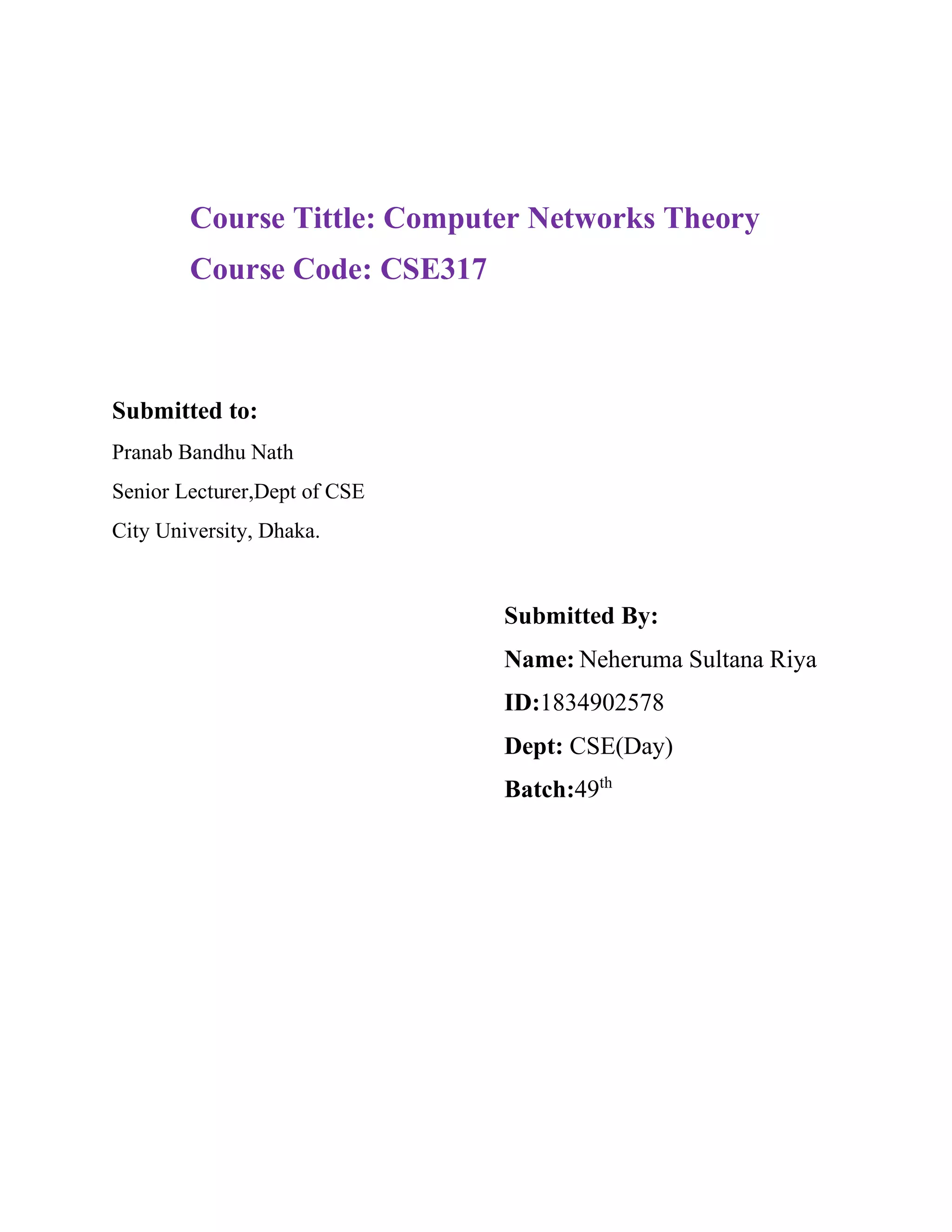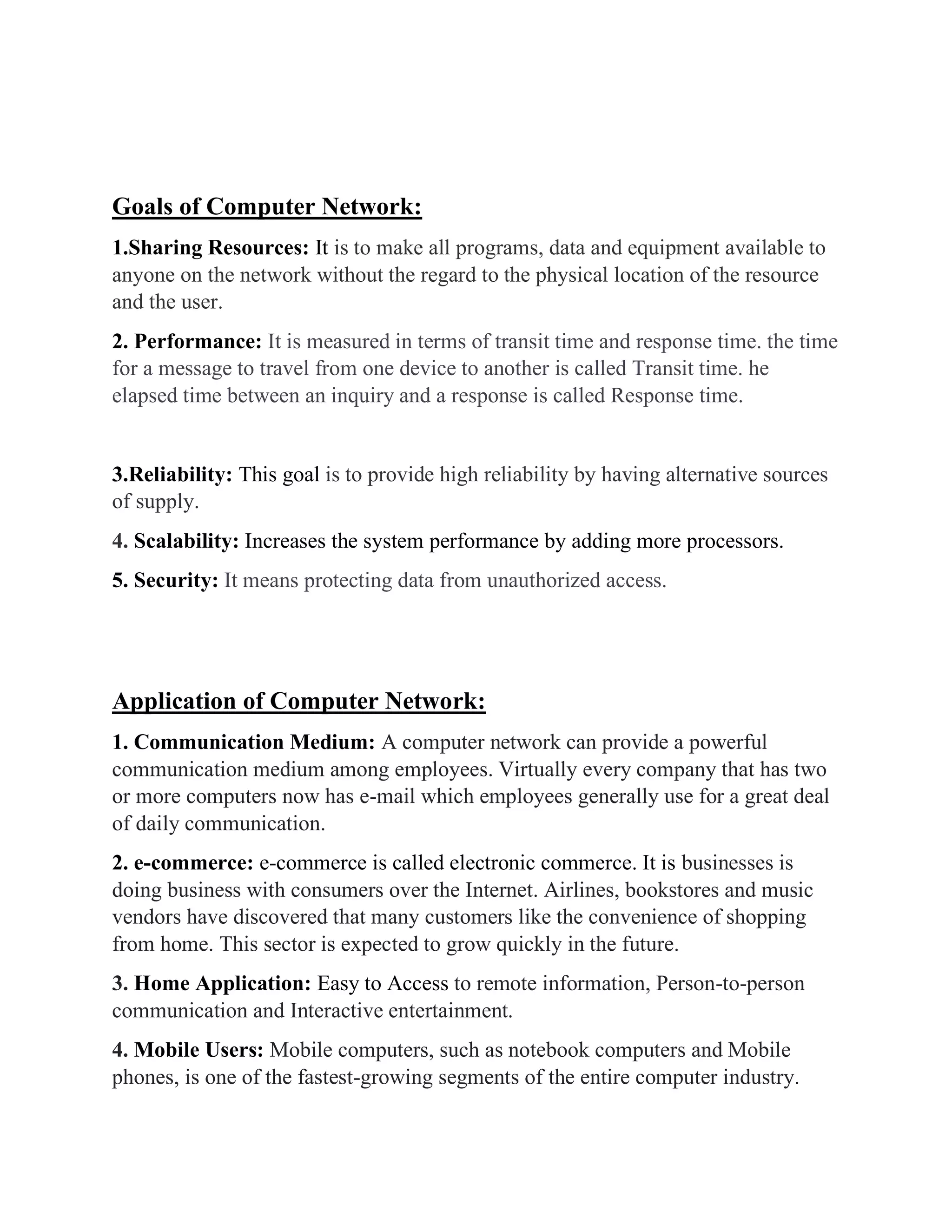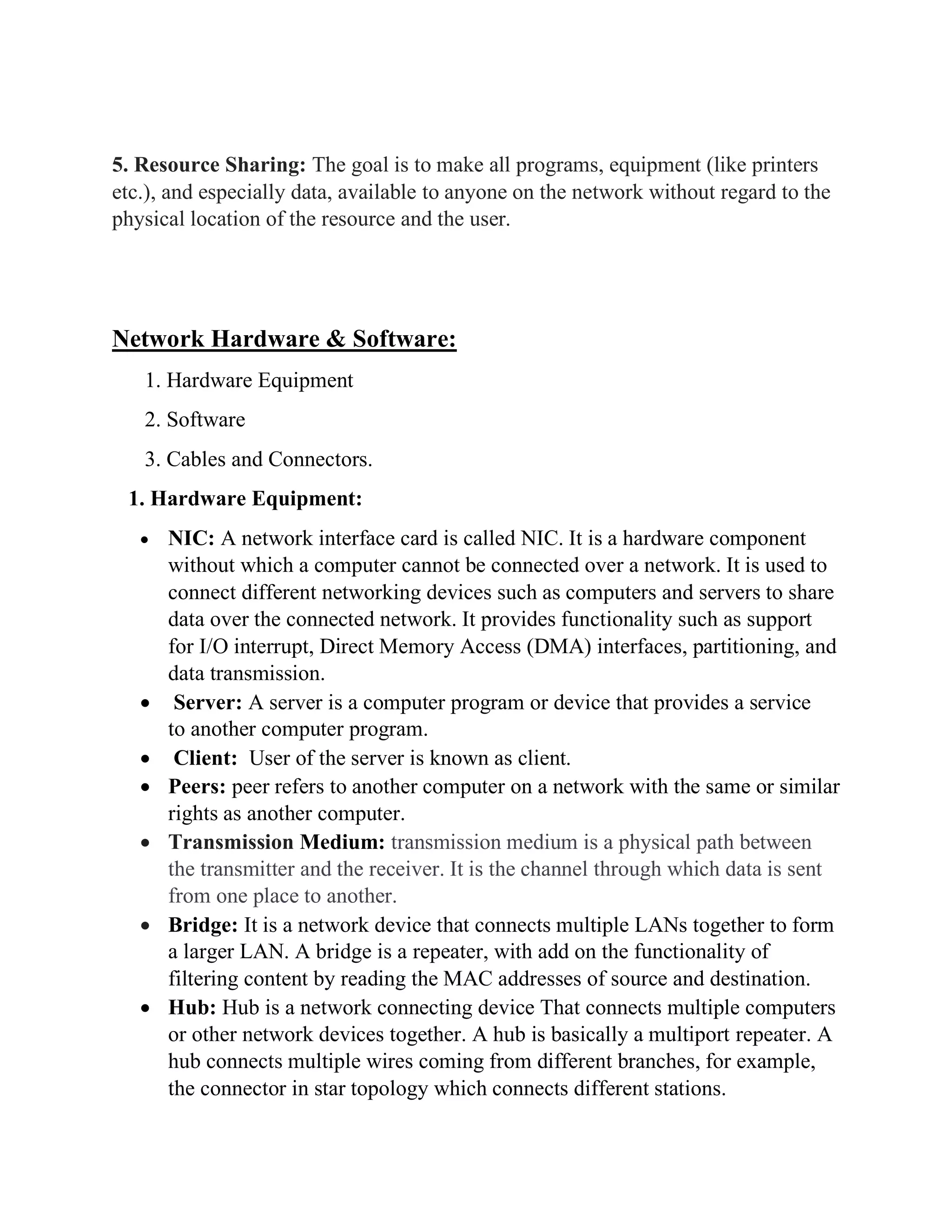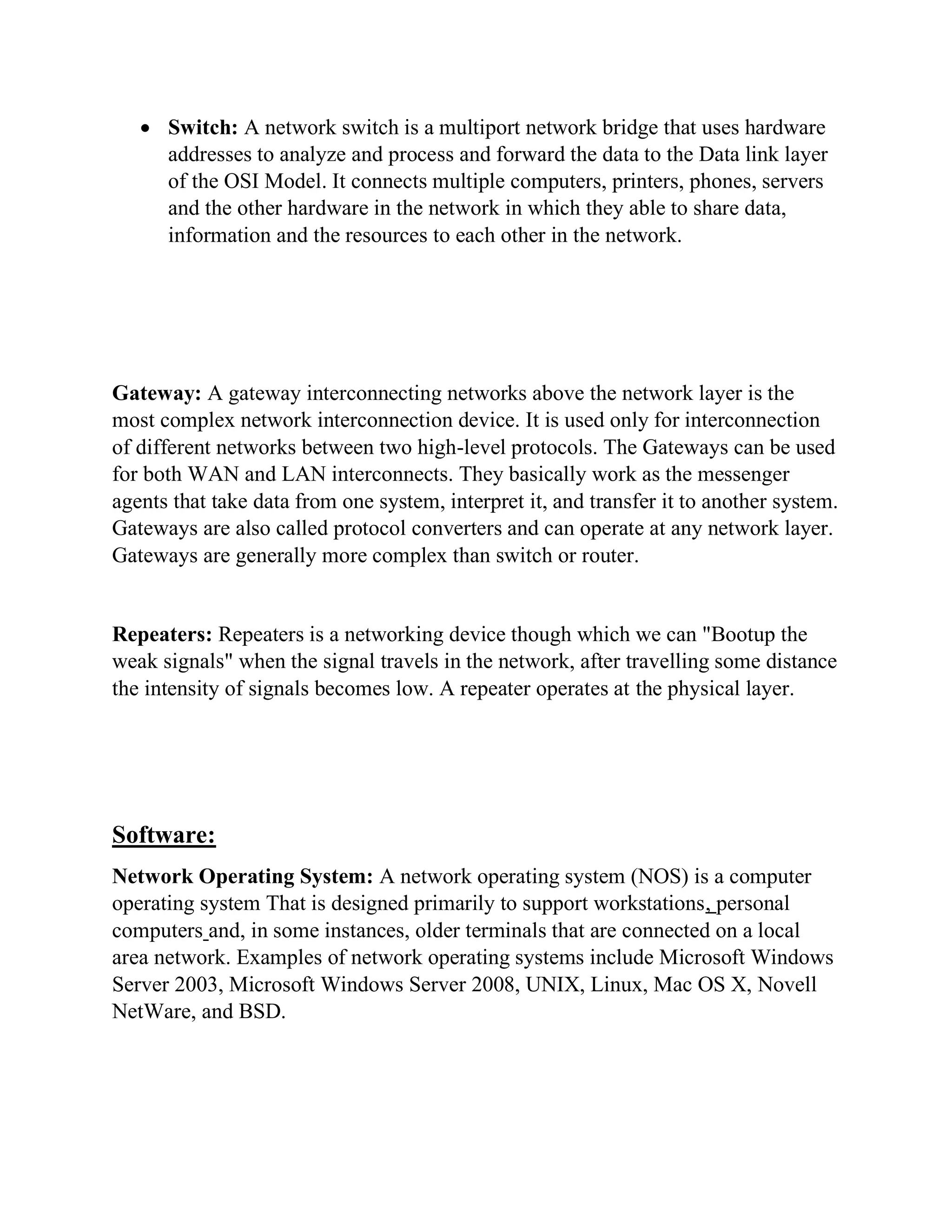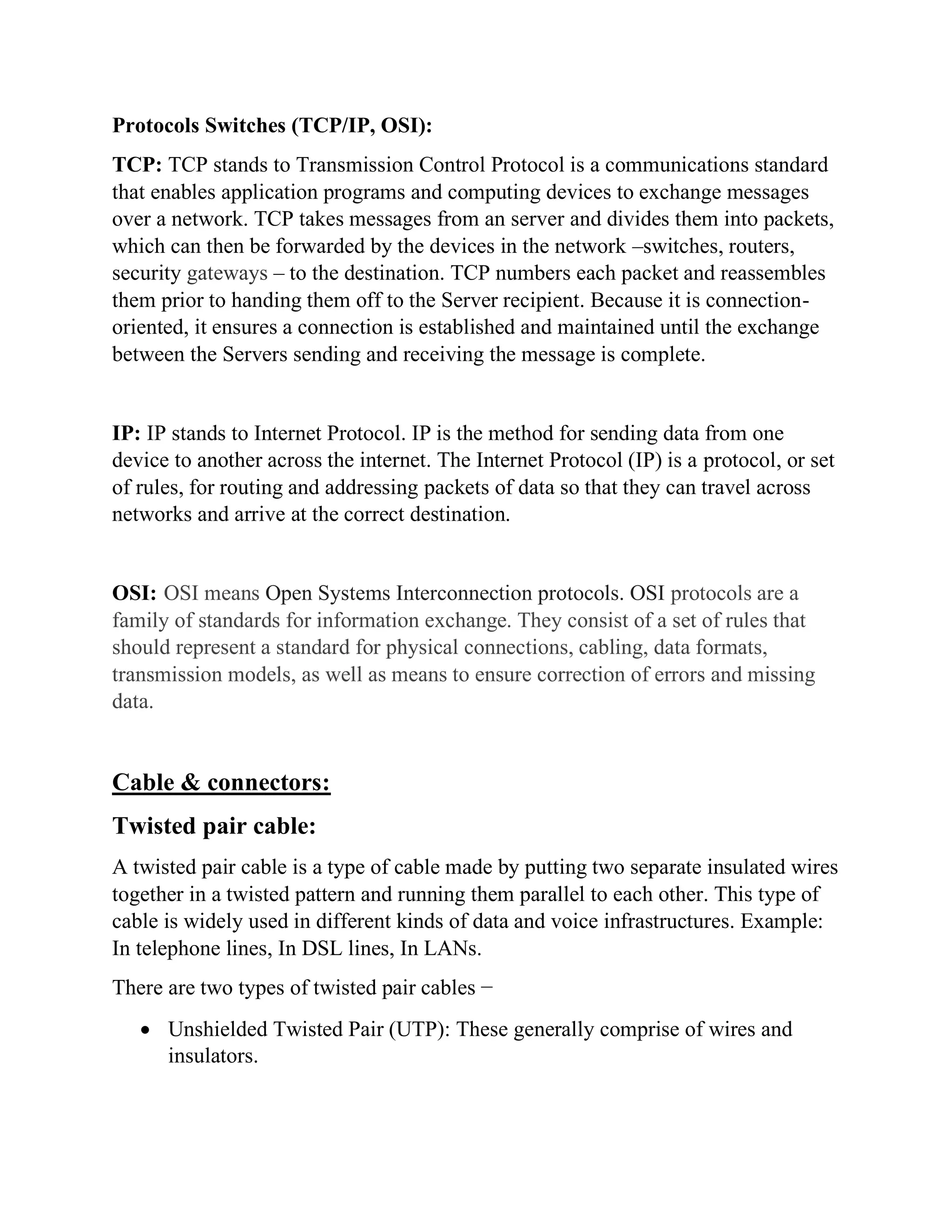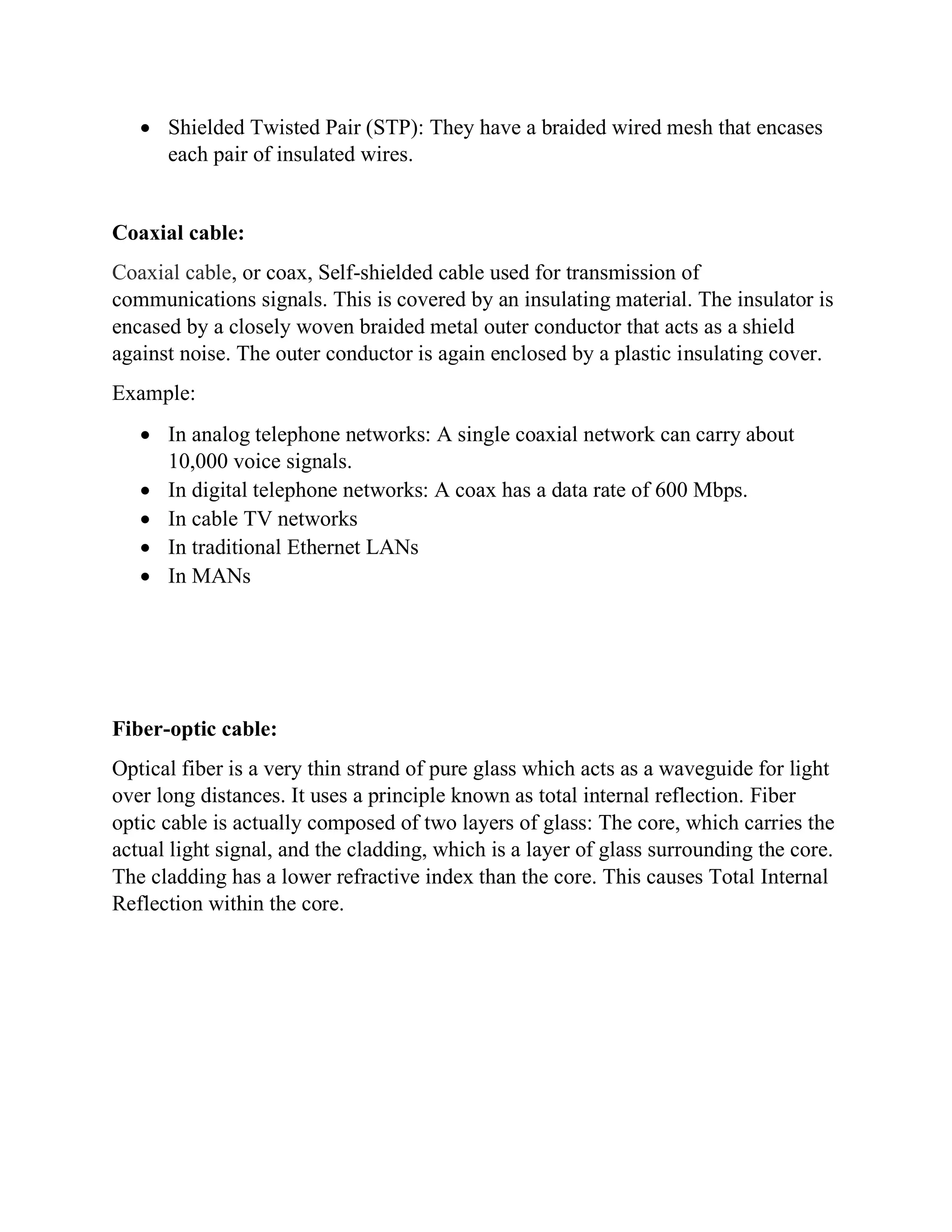This document provides information about computer networks and networking concepts. It discusses the history of ARPANET, the first packet switching network and predecessor to the Internet. It then defines what a computer network is and lists common goals of computer networks like sharing resources, performance, reliability, and scalability. The document also outlines some common applications of computer networks and provides details on typical network hardware, software, and cabling technologies.
